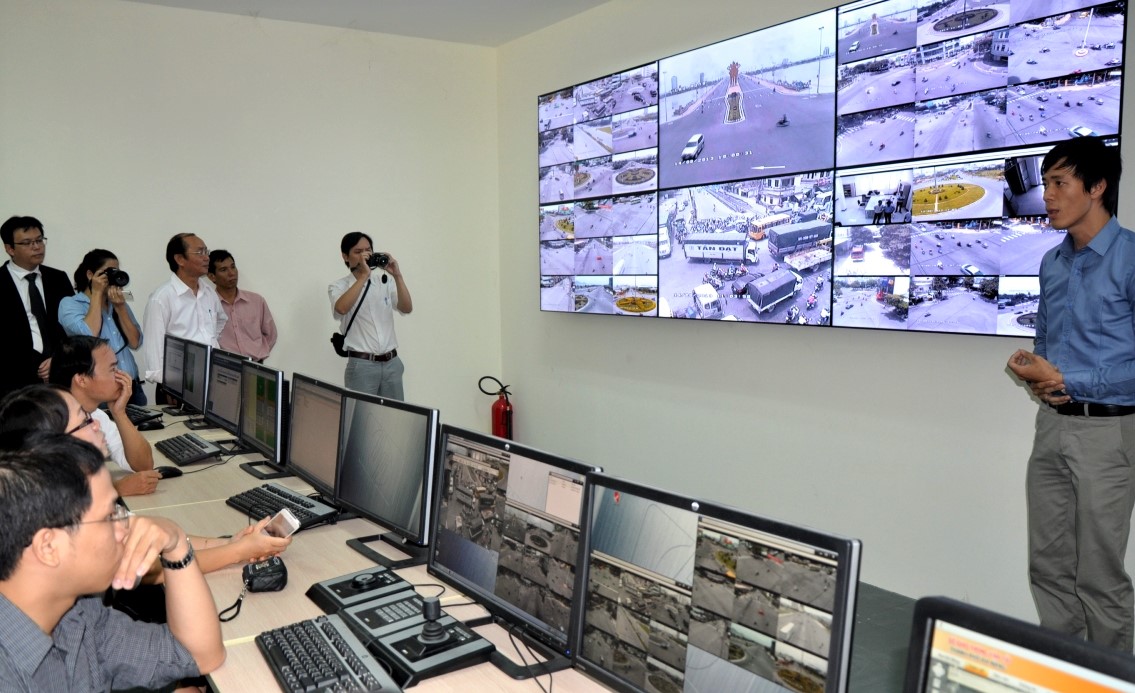Developing Da Nang towards smart city
A smart city is considered an inevitable development trend in the burgeoning world. Over recent years, many localities nationwide and worldwide have strived to reach the target of become smart cities, and Da Nang in particular is no exception.
 |
| The city’s Traffic Signals and Public Transport Control Centre has helped to ensure traffic order at intersections and alleviate traffic congestion during rush hours |
In reality, many cities worldwide have to date gained fruitful achievements, but in some certain aspects.
Da Nang is one of Viet Nam’s pioneering localities in developing specific strategies for building ‘smart’ cities.
The city, over recent years, has seen numerous remarkable achievements in its urban development thanks to its effective applications of technology information (IT) in many aspects. Therefore, local residents have enjoyed the benefits of these achievements.
In 2012, the municipal government and the International Business Machines Corporation (IBM) jointly started implementing a large-scale project, with a focus on effectively applying ‘smart’ technologies in various aspects. It is common to see booming urban utilities in the city over recent years.
For instance, Danabus, an application for smartphones, was recently launched by the municipal Department of Transport. Operated by either IOS or Android systems, the app allows its users to monitor the travel schedules of local bus routes, and then find suitable buses.
The city’s Traffic Signals and Public Transport Control Centre has helped to ensure traffic order at intersections and alleviate traffic congestion during rush hours.
In addition, many other applications have been launched in the city in order to create direct interactions between the city authorities, and locals and visitors.
Moreover, other positive results from the ongoing project include the installation of public surveillance cameras along some major streets in order to monitor and deal with traffic violations, and the automatic water quality monitoring system at the Cau Do (Red Bridge) Water Supply Plant.
An environmental monitoring station at the eastern end of Thuan Phuoc Bridge has proved effective. Its global system for mobile communications (GSM) transmits environmental data from the bridge to the centre for controlling traffic light systems and public transport in the city.
However, Da Nang is now facing some obstacles in reach its key target of becoming a truly smart city. It, therefore, is a ‘must-do for the city leaders to develop long-term strategies for turning Da Nang into a smart city.
Importance should be attached to developing smart citizens who have civic sense and respects the law.
Citizens are called upon to jointly take responsibility and actively engage in the process of city design. The city authorities should make substantial investments in smart solutions, but they cannot skimp on efforts to raise public awareness on the efficient usage of these solutions and services.
Also, special heed should be paid to promote the scientific and technological applications in a flexible and innovative manner.
It is a good idea to turn such residential areas as the Hoa Xuan ‘Floating Island’, Euro Village and Sunrise Bay into smart neighbourhoods, or make the FPT City and Da Nang University site, and other luxurious urban areas, become truly smart areas.